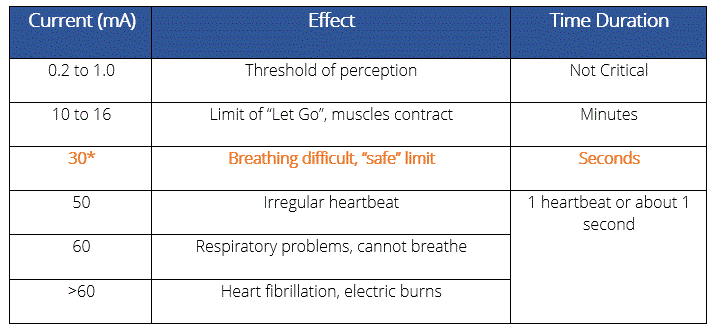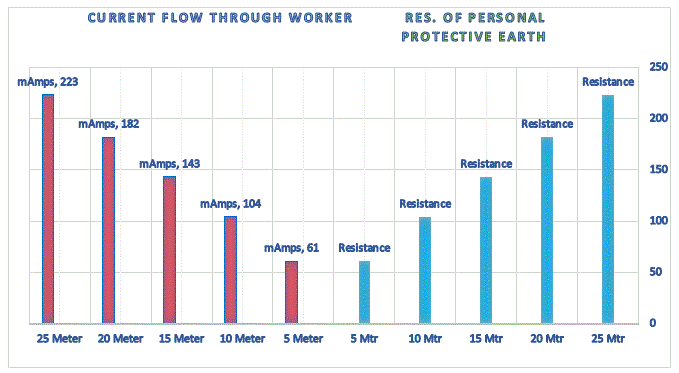WORKER PROTECTION
The use of Equipotential Bonding Zone (EPZ) for worker protection is based on the principle of creating a parallel current path around the workers body, of sufficiently low resistance, to prevent dangerous current flow in the worker. Generally referred to as a personal earth.
SAFE LEVELS OF CURRENT IN THE HUMAN BODY……RESISTANCE IS KEY.
TABLES FROM IEC STANDARD 60479-1:2018, ET 213:2007
“Safe limit of 30 mAmps. To achieve this level of protection, the resistance of the personal earth surrounding the worker must not exceed 3 mOhms for a 10kA fault, 6 mOhms for a 5kA fault and 10 mOhms for 3kA fault.
The use of Equipotential Bonding Zone (EPZ) for worker protection is based on the principle of creating a parallel current path around the workers body, of sufficiently low resistance to prevent dangerous current flow in the worker. Generally referred to as a personal earth.
As the worker and the personal earth are in parallel the same voltage appears across both and fault current will flow through both, in direct proportion to the resistance of each. Quite simply, the resistance of the personal earth determines the amount of fault current that will flow in the workers body.
Calculation: Assuming a 10kA fault and a 15 mt. personal earth. (as below)
Voltage drop across personal earth and worker is V = IR = 10kA x 0.0143 = 143 volts.
Current flow through workers body I = V/R =143/1000 = 0.143 A (143 mA)
Note: This is an example of the critical importance of resistance in EPZ bonding for worker protection.
Calculations for 25 sq mm Personal Earth: Copper 0.00078 Ohms/mtr, Joints 0.0006 Ohms ea. Connections 0.00078 Ohms ea. Human Body resistance 1000 Ohms (may be as low as 500 Ohms).


